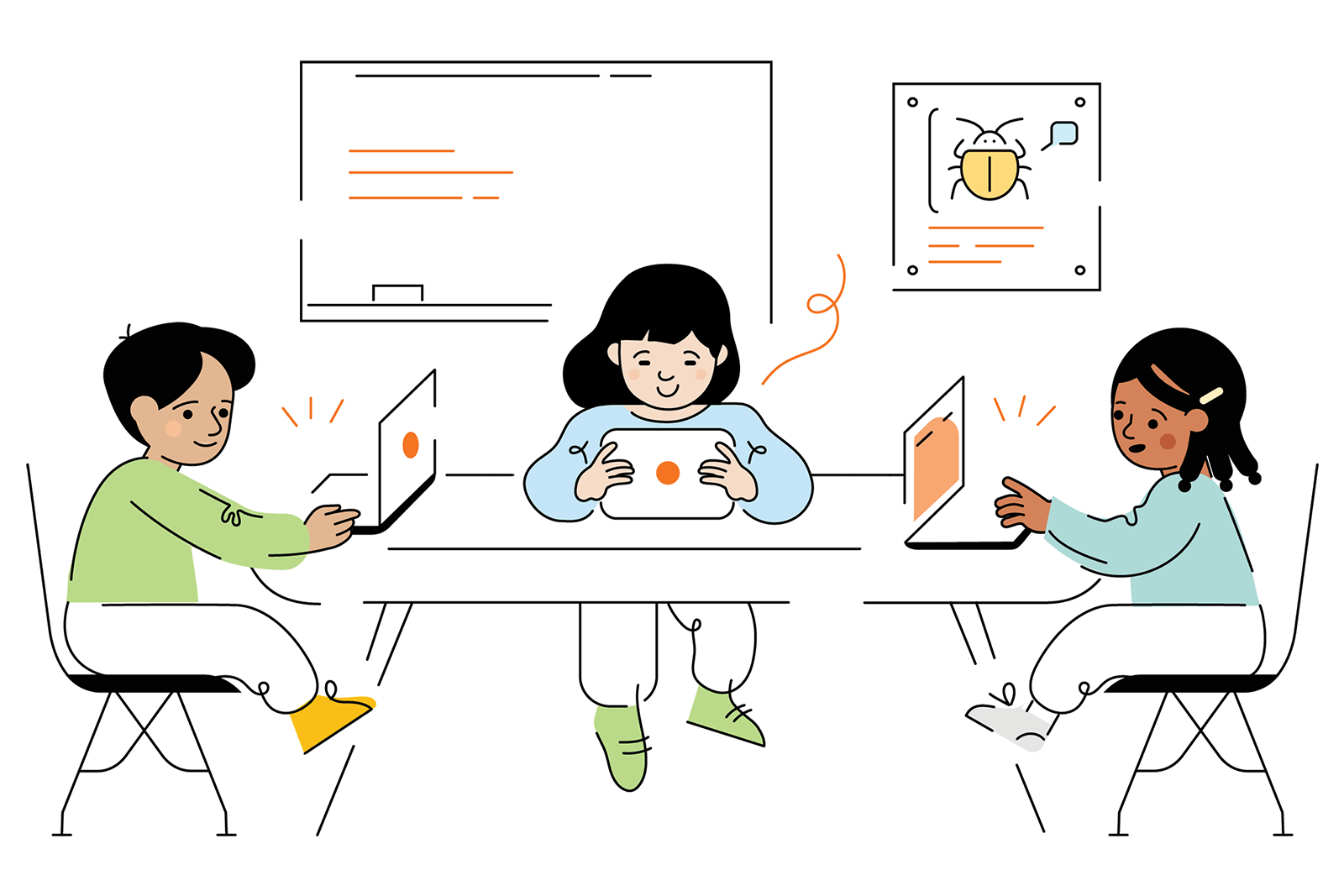
Itās tough to do math without sets, sums, and multipliers, so it stands to reason that itād be tough to learn math solo, outside of a group.
Indeed, research shows that math is best learned in a community. In this post, weāll explain why that is, what it looks like in a classroom, and how you can create a community for your math students.
What math community means: Creative classroom ideas
There are many types of math communities: online interest groups, professional organizations, the Mathletes.
In the context of a math classroom, a math community refers to the collaborative environment a teacher can create using both math strategies and social strategies (and by involving studentsā parents and guardians). In a robust math community, all ¹ś²śĀ鶹¾ēfeel comfortable sharing ideas, asking questions, and engaging in mathematical conversations.
In other words, math communities are student-centered. Rather than delivering information, teachers guide students. They encourage ¹ś²śĀ鶹¾ēto explore math concepts, make connections to the real world, and ask questionsāof each other, and the teacher.
And in a math community, wrong answers aren’t dismissedāin fact, they’re an essential part of the learning process. In our webinar , educator and director of research at Desmos, Dan Meyer underlines the importance of ¹ś²śĀ鶹¾ēunderstanding āthe value in their thinkingāwhich means the value in their wrong answers.ā
Benefits of math community: Equity in schools and more
A community-oriented math classroom can help each ¹ś²śĀ鶹¾ēlearn, and all ¹ś²śĀ鶹¾ēlearn. Hereās how.
- Increased engagement. When ¹ś²śĀ鶹¾ēfeel a sense of belonging and connection in their math class, they’re more likely to be engaged and motivated. By promoting open discussions, group activities, and cooperative problem-solving, teachers can help studentsāeven those who donāt think they’re “math people”ādevelop a genuine interest in math.
- Reduced math anxiety. Math anxiety affects at least 20% of students. It can hinder their growth in math and beyond. But in a supportive math communityāwhere different styles and wrong answers are considered part of the processāthose ¹ś²śĀ鶹¾ēcan thrive. Embracing and working from incorrect answers encourages ¹ś²śĀ鶹¾ēto focus on the āhowā of math, and to participate without fear of getting it wrong. They feel more comfortable asking questions, taking risks, and making mistakes as well as learning from them.
- Improved communication skills. In a math community, all ¹ś²śĀ鶹¾ēget the chance to communicate their mathematical thinking and reasoning. Explaining their ideas to others and listening to their classmates enhances their speaking and writing skillsāin math, and across other subjects, too.
- Learning from diverse perspectives. A supportive math classroom community allows ¹ś²śĀ鶹¾ēfrom different backgrounds and with varying abilities to contribute to class and feel valued. Encouragingāand observingāthe sharing of diverse perspectives fosters critical thinking, creativity, and problem-solving skills.
- Positive reinforcement. A strong math community creates an environment where ¹ś²śĀ鶹¾ēfeel valued, respected, included, and supported. Itās fertile ground for a growth mindset, one in which ¹ś²śĀ鶹¾ēbelieve they actually can do math regardless of challenges or errors. A math community encourages risk-taking, resilience, and perseveranceāin math, and beyond.
How to engage ¹ś²śĀ鶹¾ēin math lessons that build community
Want to know how to make math fun and build community? Here are some ways to get started.
- Encourage collaboration. Promote a culture of cooperation and teamwork by incorporating group activities, peer support, and class discussions into your lessons.
- Celebrate brilliance. Recognize a variety of efforts, insights, and accomplishments among studentsāincluding taking risks, and making mistakes. This will motivate all ¹ś²śĀ鶹¾ēto appreciate different ways of learning and the value of both process and product.
- Personalize support. Offering individualized help to ¹ś²śĀ鶹¾ēwho need it shows commitment to their success and builds a supportive environment for everyone.
- Develop a growth mindset. Create a culture where mistakes are inevitable, even welcomed, as part of the learning process. Encourage perseverance and persistence.
- Choose meaningful tasks. Assign problems with real-world relevance. Working together to solve them helps ¹ś²śĀ鶹¾ēseeĢż the āwhyā of mathāand connect with each other in the process.
- ĢżPlay. Game-ifying problems and introducing friendly competition builds camaraderie and helps ¹ś²śĀ鶹¾ēfind shared joy in mathāa win-win!


